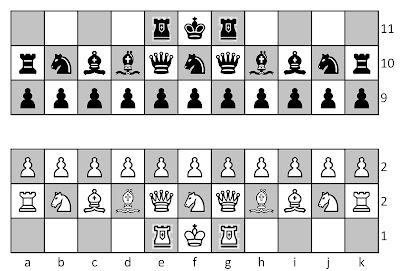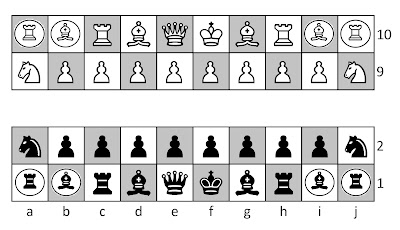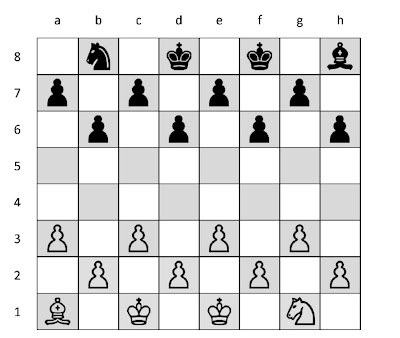We
have a critter problem in our neighborhood. Armadillos get into the yard to dig
holes and root for grubs. I used to sit up late at night with a rifle and try
to shoot them when they came into the yard. In order to shoot an armadillo, it
has to come into the yard when you are out in the weather sitting on the side
yard’s picnic table. I only saw one the whole time I was hunting, and that
night all I was armed with was an air gun. I shot him in the butt and he hightailed
it out of the yard. I switched over to a .22 rifle loaded with subsonic cartridges
and never saw another armadillo on my late night/early morning vigils.
We
decided to trap them, and we have caught countless armadillos in our traps. The
first we caught I euthanized with a .22 pistol. Being a kind soul, I decided to
make sure I killed him instantly. I walked up to the trap and held the gun
close to its head. Apparently armadillos have very small brains. I hit his head,
but not his brain. The armadillo jumped and tried to spin around. It couldn’t
make full spin, but it did spin enough to spatter blood all over my business
suit (I was going to court that morning). I shot it again in the chest and then
went in to change clothes. The next few times I shot the armadillos in the
chest with a .22 rifle. Maybe less human, but definitely less danger to your
clothing.
Finally,
the milk of human kindness got the better of me, and I started carrying them
off to Osceola National Forest and releasing them. Armadillos are very uncooperative
animals. I would often have to open the trap and shake them out. Not a lot of
fun, since armadillos are known to carry leprosy.
We’ve
caught other things in the trap: squirrels, housecats, and possums. Getting
squirrels and housecats out of the trap is very easy—just open the door and
they dash out. Possums are like armadillos, they don’t seem to want to
cooperate with you when you try to get them out. I usually have to resort to
shaking them out of the trap.
Yesterday,
I was confronted with a new animal. A tribe of skunks seems to have invaded our
subdivision. We first became aware of them when they started getting themselves
repeatedly run over near the entrance to our subdivision. These incidents were
most malodorous, and we could smell them from our house. Then the unthinkable
happened. We caught a skunk in our live trap. How do you get a skunk carried
off and removed from a live trap without getting perfumed? I called our pest
control company, and they said they would be glad to dispose of the skunk IF
they had set the trap. Since I had set the trap, however, they would not help.
At
a loss for an idea about what to do, I went to that infallible source of odd
information, YouTube, and found videos by two skunk trappers. One of them told
how to improvise a lance with a hypodermic spearhead. He said it was best to
get one of those long, extendable tree pruning poles and extend it to its
greatest length. Fill the hypodermic with paint thinner or some other poisonous
liquid and affix it to the pruning pole. Stab the skunk and push so that the hypodermic
discharged the poison into the skunk’s chest. He said if you were gentle enough
when you stabbed the skunk, it wouldn’t spray. If you weren’t gentle enough,
the length of your lance would protect you. I decided not to follow this plan.
The
next guy said skunks were pretty docile, and the best way to get them out of the
trap was to SLOWLY walk up to the trap and CAREFULLY cover it with a blanket you
wouldn’t care being rendered stinky. The blanket serves a twofold purpose.
First, if the skunk gets agitated and sprays, it theoretically will contain the
stench. Second, the blanket cuts off outside stimuli and renders the skunk less
likely to spray.
This
is the method I chose. First, I changed clothes into an outfit I was willing to
part with if the plan miscarried. (My wife warned me that if I got sprayed I
would be sleeping in the guest room until I was decontaminated). Then I got our
best blanket (just kidding) and slowly walked up to the skunk. I covered the
cage very carefully and without incident.
Next,
I gently walked the cage to my pickup truck and loaded it in the bed. Then I
drove slowly to the deep woods, being careful not to hit potholes. When I got
into the wilderness, I was overjoyed to see that the skunk had not
sprayed. The final step was to convince the
skunk to come out of his cozy cage. I set the cage on the ground, removed
enough of the blanket to get the trapdoor open, and locked it in the open
position. Then I waited from a safe distance. Like the armadillos and possums
before him, he did not seem overly anxious to escape to freedom. I decided not
to use the method I used for emptying the trap of armadillos and possums. I had
better sense than to pick the trap up and try to shake the skunk out.
Eventually the skunk found the open door and slowly walked to freedom. I wish I
had taken pictures of the entire process, but it didn’t occur to me to do so
until time to let him out.
Here
he is after he discovered the open door
and decided to saunter out.
We
have a critter problem in our neighborhood. Armadillos get into the yard to dig
holes and root for grubs. I used to sit up late at night with a rifle and try
to shoot them when they came into the yard. In order to shoot an armadillo, it
has to come into the yard when you are out in the weather sitting on the side
yard’s picnic table. I only saw one the whole time I was hunting, and that
night all I was armed with was an air gun. I shot him in the butt and he hightailed
it out of the yard. I switched over to a .22 rifle loaded with subsonic cartridges
and never saw another armadillo on my late night/early morning vigils.
We
decided to trap them, and we have caught countless armadillos in our traps. The
first we caught I euthanized with a .22 pistol. Being a kind soul, I decided to
make sure I killed him instantly. I walked up to the trap and held the gun
close to its head. Apparently armadillos have very small brains. I hit his head,
but not his brain. The armadillo jumped and tried to spin around. It couldn’t
make full spin, but it did spin enough to spatter blood all over my business
suit (I was going to court that morning). I shot it again in the chest and then
went in to change clothes. The next few times I shot the armadillos in the
chest with a .22 rifle. Maybe less human, but definitely less danger to your
clothing.
Finally,
the milk of human kindness got the better of me, and I started carrying them
off to Osceola National Forest and releasing them. Armadillos are very uncooperative
animals. I would often have to open the trap and shake them out. Not a lot of
fun, since armadillos are known to carry leprosy.
We’ve
caught other things in the trap: squirrels, housecats, and possums. Getting
squirrels and housecats out of the trap is very easy—just open the door and
they dash out. Possums are like armadillos, they don’t seem to want to
cooperate with you when you try to get them out. I usually have to resort to
shaking them out of the trap.
Yesterday,
I was confronted with a new animal. A tribe of skunks seems to have invaded our
subdivision. We first became aware of them when they started getting themselves
repeatedly run over near the entrance to our subdivision. These incidents were
most malodorous, and we could smell them from our house. Then the unthinkable
happened. We caught a skunk in our live trap. How do you get a skunk carried
off and removed from a live trap without getting perfumed? I called our pest
control company, and they said they would be glad to dispose of the skunk IF
they had set the trap. Since I had set the trap, however, they would not help.
At
a loss for an idea about what to do, I went to that infallible source of odd
information, YouTube, and found videos by two skunk trappers. One of them told
how to improvise a lance with a hypodermic spearhead. He said it was best to
get one of those long, extendable tree pruning poles and extend it to its
greatest length. Fill the hypodermic with paint thinner or some other poisonous
liquid and affix it to the pruning pole. Stab the skunk and push so that the hypodermic
discharged the poison into the skunk’s chest. He said if you were gentle enough
when you stabbed the skunk, it wouldn’t spray. If you weren’t gentle enough,
the length of your lance would protect you. I decided not to follow this plan.
The
next guy said skunks were pretty docile, and the best way to get them out of the
trap was to SLOWLY walk up to the trap and CAREFULLY cover it with a blanket you
wouldn’t care being rendered stinky. The blanket serves a twofold purpose.
First, if the skunk gets agitated and sprays, it theoretically will contain the
stench. Second, the blanket cuts off outside stimuli and renders the skunk less
likely to spray.
This
is the method I chose. First, I changed clothes into an outfit I was willing to
part with if the plan miscarried. (My wife warned me that if I got sprayed I
would be sleeping in the guest room until I was decontaminated). Then I got our
best blanket (just kidding) and slowly walked up to the skunk. I covered the
cage very carefully and without incident.
Next,
I gently walked the cage to my pickup truck and loaded it in the bed. Then I
drove slowly to the deep woods, being careful not to hit potholes. When I got
into the wilderness, I was overjoyed to see that the skunk had not
sprayed. The final step was to convince the
skunk to come out of his cozy cage. I set the cage on the ground, removed
enough of the blanket to get the trapdoor open, and locked it in the open
position. Then I waited from a safe distance. Like the armadillos and possums
before him, he did not seem overly anxious to escape to freedom. I decided not
to use the method I used for emptying the trap of armadillos and possums. I had
better sense than to pick the trap up and try to shake the skunk out.
Eventually the skunk found the open door and slowly walked to freedom. I wish I
had taken pictures of the entire process, but it didn’t occur to me to do so
until time to let him out.
Here
he is after he discovered the open door
and decided to saunter out.
Here
he is strolling toward the woods.
And
here he is escaping into the woods.
All
that was left to do was drive home, throw away the beggar weed infested blanket,
pick the beggar weeds off my pants cuffs, reset the trap, and hope that no more
skunks wandered into it.























